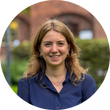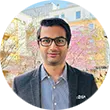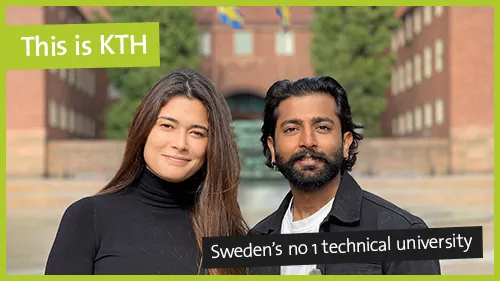MSc Aerospace Engineering
The master's programme in Aerospace Engineering fosters skilled engineers for careers in the international aerospace sector and related fields. The programme offers specialisation in Aeronautics, Space, Lightweight Structures and Systems Engineering. Graduates have a solid theoretical foundation in aerospace modelling, analysis and design, as well as teamwork skills and a general ability to approach and solve complex engineering tasks.
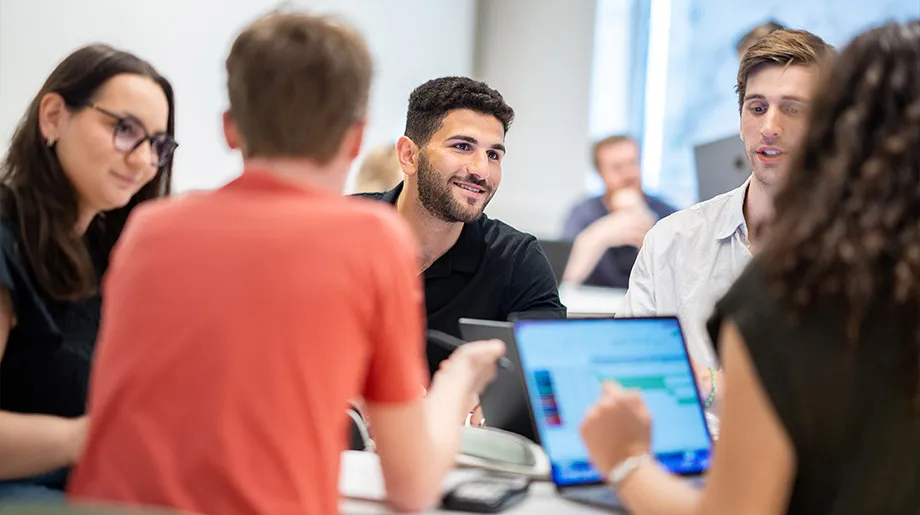
Aerospace Engineering at KTH
The master's programme in Aerospace Engineering offers you a broad, challenging and internationally acknowledged education. It provides skills in aerospace modelling and design, solving complex engineering tasks, collaboration with others in project work, and communicating results and findings professionally. The programme at KTH is highly international, with contacts and students from all over the world. The astronaut and KTH alumnus Christer Fuglesang is the chairman of the Programme's Advisory Board.
The master's programme in Aerospace Engineering is a two-year programme (120 ECTS credits) taught in English. Graduates are awarded the degree of Master of Science. The programme is given mainly at KTH Campus in Stockholm by the School of Engineering Sciences.
During the autumn semester of the first year of study, all students take one fundamental mandatory course in each of four tracks: Aeronautics, Space, Lightweight Structures and Systems Engineering. In addition, the course Theory and Methodology of Science is mandatory for all master's students at KTH. We allow you to experience various aspects of aerospace engineering and make an informed decision when choosing your specialisation track.
Towards the end of the autumn semester, you choose one of the four available tracks. Each track has several mandatory courses worth about 25 ECTS credits. The rest of the courses are elective. We provide a set of recommended courses for your track, but you can choose elective courses entirely freely, based on your own interests and future sought careers. There are also many possibilities to combine courses between the tracks. The specialisation tracks start during the spring semester of the first year of study.
During the spring semester of the second year, you will conduct a five-month degree project. You can do the project at a company, an institute or a university, in Sweden or abroad. It allows you to work on open-ended, complex engineering problems in an industrial or research-oriented setting. The degree project is examined through a written thesis and an oral presentation at an open seminar.
Aeronautics
The track focuses on modelling, analysis and design of aircraft. You will learn how to estimate the performance of an aircraft, compute its aerodynamic properties, simulate its motion in flight, and analyse how the aerodynamic and structural properties influence stability and control. The track is characterised by a strong interaction between theory and practice. You will, for example, plan, perform and evaluate a wind tunnel test during your studies.
Lightweight Structures
The Lightweight Structures track focuses on analysing and developing lightweight materials and structures for more efficient mechanical solutions and products. Functionality per weight is a simple but highly relevant measure of efficiency since reduced weight can enable improved performance, more cost-effective production and reduce material consumption and environmental impact. The track mainly emphasises fibre composites, including non-metallic materials and sandwich structures, since such materials are often used in applications with extreme requirements. You will develop knowledge and skills in analysis, design, optimisation, manufacturing and testing of lightweight materials and structures.
Space
Space technology plays a crucial role in modern society, enabling telecommunication and navigation services, weather forecasting, Earth observation and much more. The space track focuses on applications related to rocket and satellite technology, with particular emphasis on propulsion, trajectory analysis, spacecraft dynamics and systems perspective. The space environment and its impact on the design and instrumentation of satellites is another central theme in the education. Courses in human spacecraft, space research and space application provide a broader perspective of the field.
Systems Engineering
Aircraft, trains and satellites are examples of complex systems that have to be designed with reliable control systems and efficient maintenance plans to be competitive in today's global market. Upon graduation, you will be able to develop mathematical models of systems to analyse and optimise their performance. Control theory has a crucial role in the design of space missions and the robustness and performance of modern aircraft.
Courses in the programme
The courses in the programme cover topics such as aerodynamics, aeroelasticity, space physics, spacecraft dynamics, mechanics and manufacturing of composite materials, lightweight design, control theory and numerical optimisation.
Courses in the master's programme in Aerospace Engineering
Future and career
As an aerospace engineer, you can become a scientist or a CEO, a stress analyst or a project manager, a technical support specialist, a salesperson or an astronaut, all depending on the opportunities that come about and the decisions you make. The employment market for aerospace engineers in Europe is strong and will likely remain so for the foreseeable future. Airbus is the leading European aerospace company with more than 130,000 employees, but a large share of the work is performed by various subcontractors all over Europe and worldwide. Students taking the Aeronautics track are particularly attractive to companies working in aerodynamics and aeronautics.
The space sector is dynamic and evolving, with major projects such as navigation satellite systems and challenging scientific missions. The European space industry employs about 40,000 people. As a space engineer, you can, for example, work with developing, testing and operating satellites, launchers, sounding rockets or other space systems.
Students taking the Lightweight Structures track become well prepared for a future in developing new products or applications where more sustainable air transportation likely will be a key societal issue for the coming decades. There is a constant need for skilled structural engineers within aerospace, naval and automotive engineering and in other businesses working with more niched manufacturing or innovative design solutions, making the employment market huge.
Today, Systems Engineering is increasingly important in areas like the aerospace sector, the automotive industry and communications systems. A systems engineer could work with the design of the control of the damping in an aircraft’s landing gear, how to find the least costly spare parts management system for an air fleet, or in analysing the reliability of a radar system. A systems engineer is attractive to a large number of industries in various fields.
A master’s degree in the aerospace field from KTH is a mark of quality and opens a wide range of career opportunities in industry and research, as well as within areas outside the aerospace sector. Each year, a number of graduating students also chose to pursue careers in academia through doctoral studies.
Sustainable development
Graduates from KTH have the knowledge and tools to move society in a more sustainable direction, as sustainable development is an integral part of all programmes at KTH. The three key sustainable development goals addressed by the master's programme in Aerospace Engineering are:
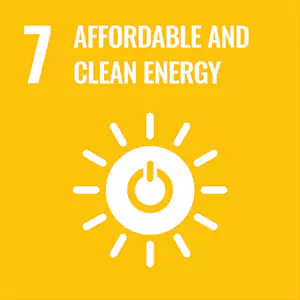
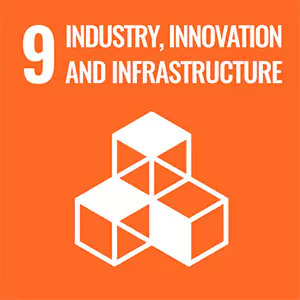

The aerospace sector has always been driven by high aerodynamic efficiency, low weight and state-of-the-art usage of new materials, and improvements in the efficiency of propulsion systems. Considerable development work and efforts are continuously being performed, both in small details and at a systems level. For commercial aircraft, there has always been a strong emphasis on lowering fuel consumption and, thereby, emissions and release of CO2.
With increased travelling in recent years, the aerospace sector has become the focus of many debates about CO2 emissions and air pollution, with considerable positive progress being made in applying fossil-free fuels and initiatives in electrified flight and carbon-free propulsion. These are exciting times, with most people agreeing that flying as we know it today cannot increase without severe environmental implications. At the same time, there are no indications of our flying habits diminishing now or in the future. On the contrary, one of the more likely applications for electrified flight is for short-distance travel where we do not currently fly. The air-travel business and modern society thus face significant future challenges, making education in aerospace engineering more relevant and interesting than ever. Transitioning into sustainable flying is crucial for maintaining the current level of mobility in the world. As an aerospace engineer, you can contribute to global development in that direction.
Satellites are crucial for a sustainable world, but millions of non-operational satellites or parts of satellites still fly in low Earth orbit. Because such "space junk" endangers operational satellites, active space debris removal missions are planned to prevent its uncontrolled growth. Liquid fuels for satellite propulsion have previously been highly toxic and expensive to handle safely. Now, the Swedish space industry has developed "green" fuels with performance characteristics similar to those of harmful fuels. Until recently, launch vehicles have mostly been expendable, but after the retirement of the space shuttle, new reusable launch vehicles have been developed by private space companies, enabling cheaper access to space. The guidelines and rules on sustainable space activities are being updated to reduce risks and ensure access to space for future generations.
Faculty and research
The compulsory part of the master's programme in Aerospace Engineering is taught by faculty who are also internationally recognised researchers within their fields. The programme is also broad in the sense that courses are given by several departments and schools at KTH. In addition to the class room education, several research labs are also engaged in the teaching of computations, manufacturing, tests and measurements. KTH is a member of the European aerospace education network PEGASUS .

